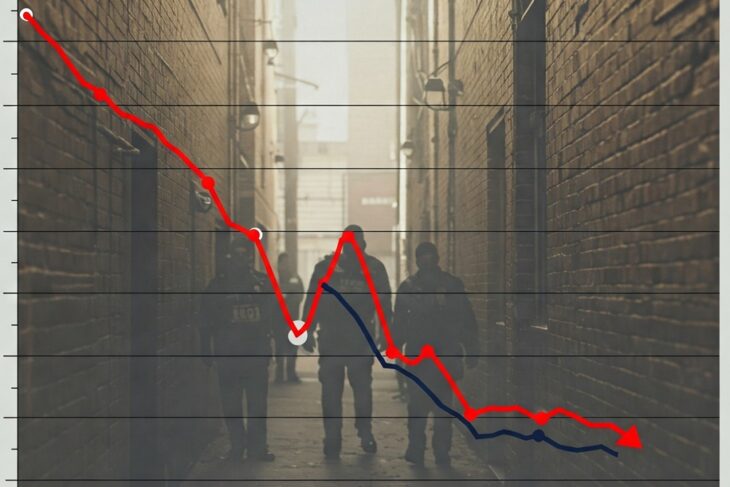 At the commencement of the school year I was silently praying and hoping that this will be the year when violence in schools will, if not totally eliminated, be drastically reduced, and we could return to those days when we betray a measure of tolerance, and exercise a greater degree of civility in dealing with our misunderstandings, or differences of opinion.
At the commencement of the school year I was silently praying and hoping that this will be the year when violence in schools will, if not totally eliminated, be drastically reduced, and we could return to those days when we betray a measure of tolerance, and exercise a greater degree of civility in dealing with our misunderstandings, or differences of opinion.
Whilst my thinking could gleefully be seen as wishful, we ought not to abandon the thought that some practices of the past, with appropriate adjustments, ought to be considered for reinstatement if we are to save our society from the long-term effects of violence in and out of school.
It is extremely important that we work to return our schools to the ‘good old days’, or better still look forward to a time and place where students can function in an environment that is conducive to learning and the positive honing of their impressionable minds. This is where development takes root, in an educational environment that brings out the best in our children and potentially helps to narrow the gap between poverty and prosperity.
The more we think deeply about it, it becomes clear that the social dimension of economic development hinges on our educational system, and the real challenge that countries like Jamaica face is the transitioning of their social structures and human capital to achieve sustainable development.
The inherent contradiction is all too evident in our educational system, when we face along with the myriad other problems the violence plaguing our schools. We are witnesses to the horrific violence that continues to be inflicted upon our children; the school community that can suddenly be transformed into theatres of conflict; the attacks on our teachers, and so many of our students fall by the wayside because of lack of proper guidance and financial support. We could easily despair had it not been for the tremendous work done by individuals, charity organisations, private sector foundations and groups in the diaspora, like the Peace and Love Academic Scholarship Foundation (PALAS) in Atlanta, Georgia, which are helping to transform the lives of many Jamaican youths who were struggling to find the financial resources to meet their educational needs.
Despite these efforts the educational system continues to be constrained by the struggles to overcome violence in schools and to guarantee every child an opportunity to fulfil his/her basic right to an education. While we have done much to make education more accessible and improve on the quality and equity, the education system has been plagued by the lack of attendance caused by poor economic circumstances, chronic under-performance and an alarming number of drop-outs, particularly in the lower socio-economic communities.
We do have in place sufficient legislation, policies and programmes to combat the challenges in our educational system, but we may be lacking in the area of institutional capacity to coordinate and implement the measures to overcome these challenges. This is, in fact, what the latest UNICEF Situational Analysis Report indicates, that without “the institutional capacity to coordinate and implement, and without increased resources towards improving this capacity, the government’s commitment will be questioned, and there is little potential for improvement and change.”
These improvements and changes must first occur in the social context that helps to form the attitudes of youths that are played out in our schools; and made that much more difficult when 80% of our children have either been exposed to physical or psychological violence.
The interventions through the deans of discipline and the School Resource Officers have had minimal success. A couple years ago the Ministry of Education noted that there were 1,288 reported cases of violence in schools in one academic year, with three murders. This is alarming and quite worrying if the institutional capacity is not in place to address the situation.
The need for some other kind of intervention to address this growing and alarming problem among our youths is overwhelming. At one time I was even reluctant to consider the expulsion of students from schools because I believed then that the schools were far more regulated and provided a better setting than some of the inner-city communities to nurturing the youths. And in the end we are turning them out in an environment that breeds violence and criminal behaviour, which, in the final analysis, would be more harmful to the student and the society.
That position changed some years ago when I sat on the school board of my alma mater. The Personnel Committee, which I chaired, had to deal with several disciplinary matters, including one which was the game-changer. A young man was brought before the committee for allegedly chasing another boy during the lunch break with a long knife. Before the young man came I wanted to review his academic performance and get a better profile of his persona before starting the interview. Most of his grades were between 15 and 20, which led me to believe that the maximum marks were 20 and not 100.
One subject in particular had 40 plus which caused me to enquire why some were marked out of 20 and this particular subject out of 100. To my surprise, all the grades, some of which were below 10, were all marked out of 100.
The young man spoke very little at the disciplinary hearing; his answers were largely in single syllables and he offered no explanation for his behaviour, nor even had a made-up story, and showed not the slightest sign of being remorseful. In summing up his mannerism and general demeanour, the committee was of the view that his continued presence on the school compound would drive fear in the hearts of the students and this was certainly not the kind of enabling environment that would induce learning. An entire school population was likely to suffer by his silent aggressive behaviour and his inclination to resort to ‘jungle justice’ for whatever he may perceive to be ‘disrespect’ or ‘unfair’ to him. No teacher would be immune from his vengefulness.
We took the decision to expel him, which brought a sigh of relief to the school community, and no doubt would cause him to find a more receptive environment in his community to further cultivate his poor attitude.
This is certainly not the kind of solution to Jamaica’s problem of poor education, crime, violence and ultimately development. Criminal behaviour is, of course, fed by low levels of education, and while we may be forced to rid the school of criminal behaviour to ensure the environment is conducive to learning, we ought not to abandon the perpetrators who may themselves be the victim of social upbringing and negative cultural influences. The overwhelming desire is to ensure that schools are safe, but the often, if not necessary exclusionary and punitive approaches will not solve the country’s long-term problems.
I thought of the reform schools I grew up hearing about which were set up during the 19th century, both in England and the colonies, to deal with criminality among teenagers. Charles Dicken’s Oliver Twist captured the story of London at the time where children were recruited into criminal gangs and child labour was prevalent. Although the reformatory schools were penal institutions, the thinking was to remove juvenile delinquents off the street and into an institution. We have seen them moved from juvenile detention centres run by correctional officers to industrial schools to prevent them from becoming full-blown criminals. These institutions were geared towards instilling discipline, and providing children with practical skills that would make them employable.
Jamaica is at the point where we are losing thousands of our unattached youths because of a sense of hopelessness and a life of criminality, much like 19th century London. In our youths are talents yet to be explored; ideas not fully developed, but little by way of opportunity to guide them and direct their energies into positive outcomes. This depletes our human resource capabilities to achieve sustainable development by not only the loss of their talents and skills, but the negative effects of their anti-social behaviour and the culture of violence which is cultivated over time.
Our approach, therefore, to the critical situation facing our youths has to involve the use of custodial institutions, whether we refer to them as juvenile correctional centres, continuation high schools or alternative schools. Except for the more incorrigible youths, a chance to rescue a whole generation of at-risk youths requires us to look seriously at providing an institutional setting that educate and normalise behaviour.
The Citizen Security and Justice Programme (CSJP) which focuses on building community safety and security and contribute to the holistic development of participants is the concept I am advocating, except where the need now arises to provide an institutional setting that targets the intervention over a sustained period.
This, I am sure, would help to reduce the influx into the prison population margin and give our youths a real chance of survival. The British Government’s offer to build a prison (without any conditions) must be redirected in providing the institutional setting that could prevent us from building prison walls. Jannik Hansen Authentic Jersey



